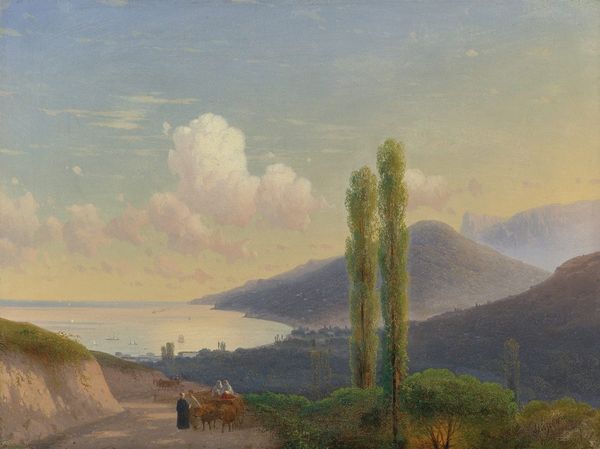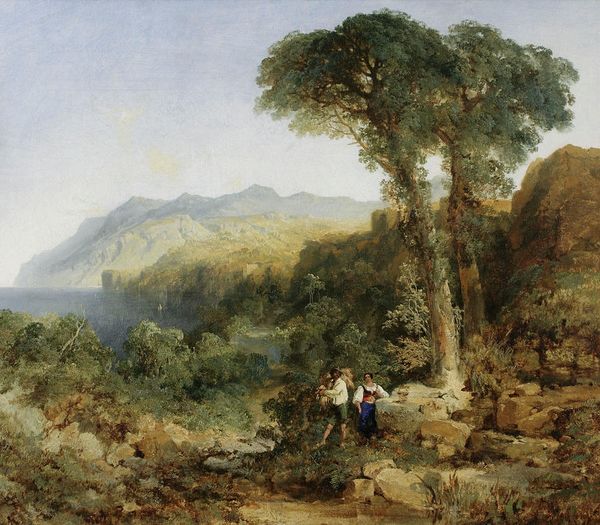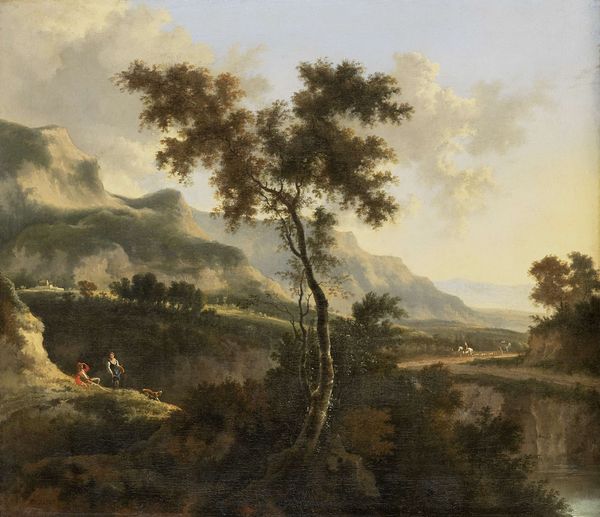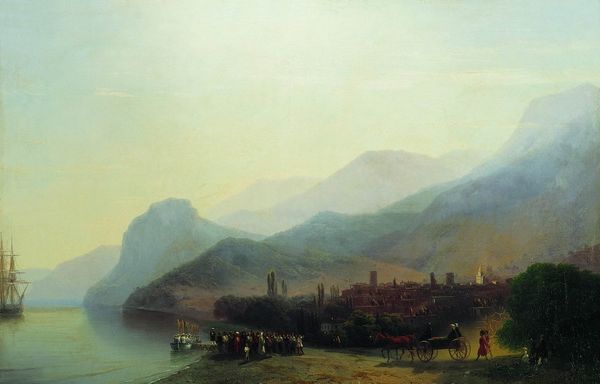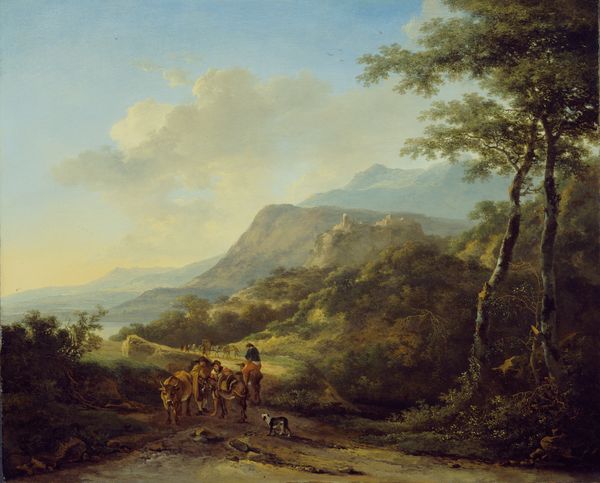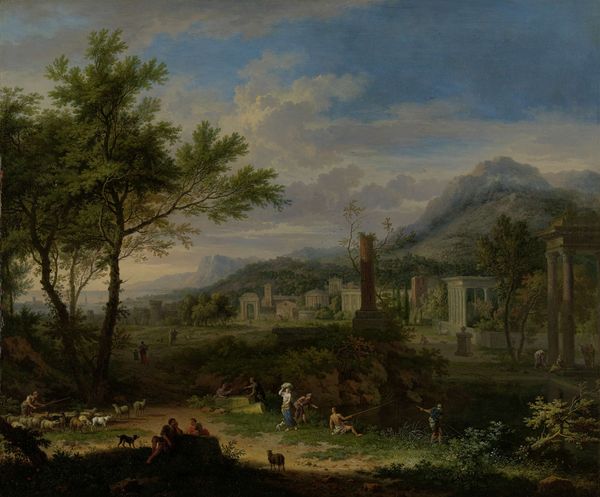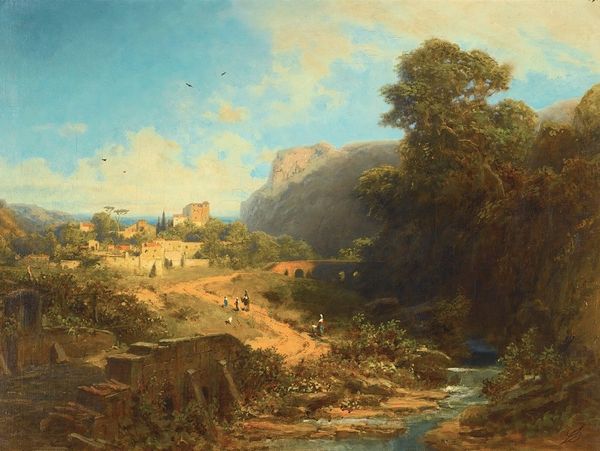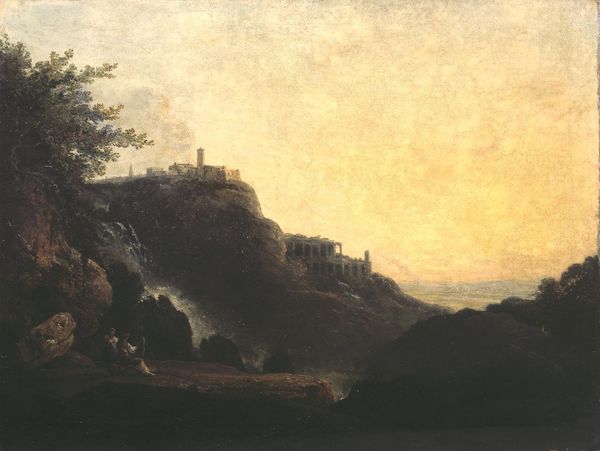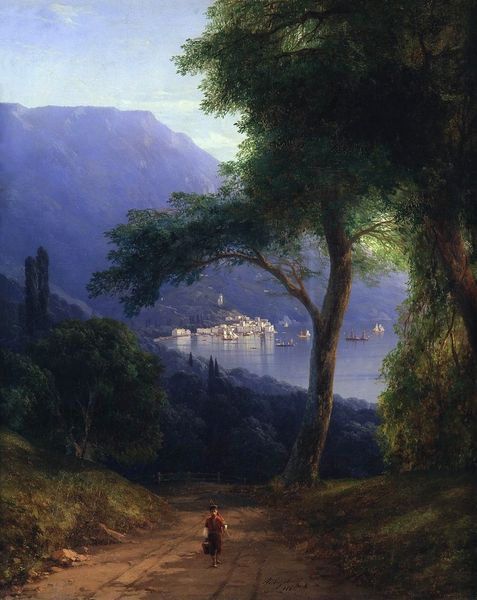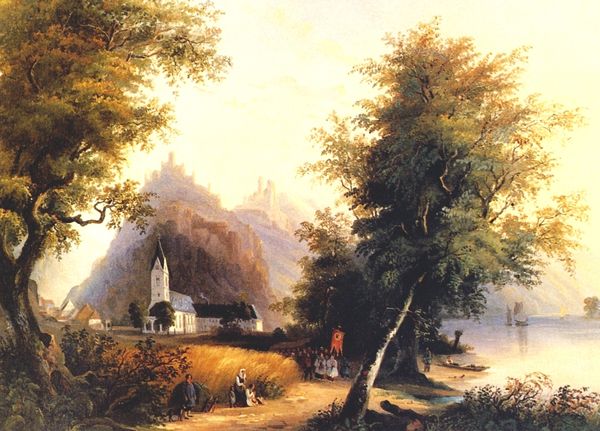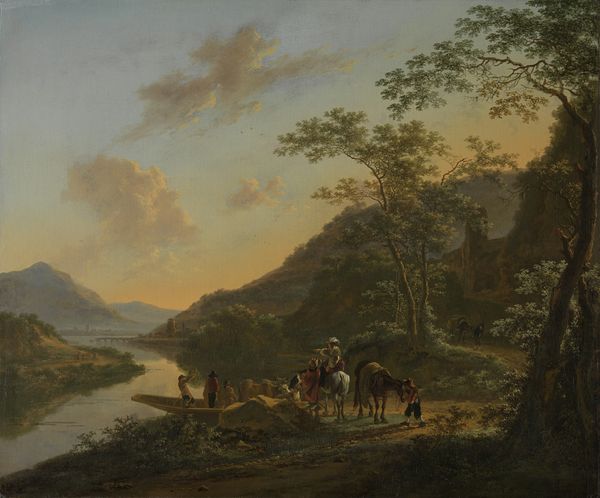
painting, oil-paint
#
painting
#
oil-paint
#
landscape
#
oil painting
#
romanticism
#
cityscape
#
realism
Copyright: Public domain
Editor: This is "A Summer's Day in Crimea," by Ivan Aivazovsky. It’s an oil painting. What strikes me most is the idyllic feel, that almost dreamlike quality given by the light. What do you see in this piece? Curator: Beyond the obvious romanticism, this work is fascinating in terms of how it presents Crimea as a site of leisure and Russian expansion. Aivazovsky, though Armenian, was a staunch supporter of the Russian Empire, and his depictions of Crimea often served to legitimize Russian control of the region, which had been recently acquired. Notice how the people seem at peace and blend perfectly with the serene and calm landscape? Editor: That’s a great point. So, the beauty kind of obscures a political agenda? The figures enjoying this picturesque location represent something more than just people enjoying a landscape? Curator: Exactly. Think about who could access these leisurely scenes at the time. Depicting Crimea in this way helped construct a narrative of Russian progress and civilization in the region, which often overshadowed the experiences and histories of other groups living there, such as the Tatars. The painting itself, therefore, became a tool for constructing a particular image of power and culture. Editor: So, this isn't just a pretty landscape, it's a carefully crafted statement about power, and maybe even belonging. It makes me rethink what I assumed was a simple, peaceful scene. Curator: Indeed. Art often plays a significant role in reflecting and shaping our understanding of history and political realities. It also forces us to ask: Who are these landscapes for? Editor: I’ll definitely carry that question with me from now on. It changes the way I view art, knowing it may carry layers of complex and perhaps invisible agendas. Curator: Precisely! Recognizing the interplay between aesthetics, politics, and history enriches our viewing experience.
Comments
No comments
Be the first to comment and join the conversation on the ultimate creative platform.


